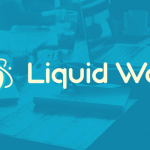Table of Contents
- Introduction: The Role of Central Banks
- Understanding a Pause in Rate Hikes
- Impact on the Labor Market
- Sudden Pause in the Cycle
- Evaluating the State of Inflation
- Factors Leading to the Federal Reserve’s Action
- Conclusion
- FAQs (Frequently Asked Questions)
1. Introduction: The Role of Central Banks
Central banks around the world play a crucial role in managing and guiding their respective economies. One of the primary tools at their disposal is monetary policy, which includes setting interest rates. By influencing short-term interest rates, central banks can regulate borrowing and lending activities in the economy. These actions, in turn, impact various sectors, such as housing, investment, and employment. The U.S. Federal Reserve is no exception and has a pivotal role in shaping the economic landscape of the United States.
2. Understanding a Pause in Rate Hikes
A pause in rate hikes refers to a period during which the Federal Reserve decides to hold off on raising interest rates further. It is a temporary break in the upward trajectory of interest rate increases. The decision to pause rate hikes is influenced by a range of economic factors and indicators. By pausing, the Federal Reserve aims to assess the impact of previous rate hikes and ensure that the economy remains on a stable path.
3. Impact on the Labor Market
The Federal Reserve’s rate hikes can have implications for the labor market. When interest rates increase, borrowing becomes more expensive for businesses and individuals. This can lead to a decrease in investment and spending, which may ultimately impact employment. However, the extent of this impact varies and depends on the overall health of the economy, market conditions, and other factors.
:max_bytes(150000):strip_icc()/GettyImages-1449167342-e321e2025aca4047889645666c1f2ed7.jpg)
4. Sudden Pause in the Cycle
The decision by the Federal Reserve to suddenly pause the rate hike cycle often comes as a response to changing economic conditions. The central bank closely monitors various indicators, such as economic growth, inflation, and financial stability. If there are signs of potential risks or imbalances in the economy, the Federal Reserve may choose to pause rate hikes to assess the situation and make informed decisions.
5. Evaluating the State of Inflation
One of the critical considerations for the Federal Reserve is the level of inflation in the economy. Inflation refers to the increase in the general price level of goods and services over time. The Federal Reserve aims to maintain stable inflation within a target range. If there are indications of a decisive slowdown in inflation or if it falls below the desired range, the Federal Reserve may adjust its monetary policy, including the rate hike cycle.









